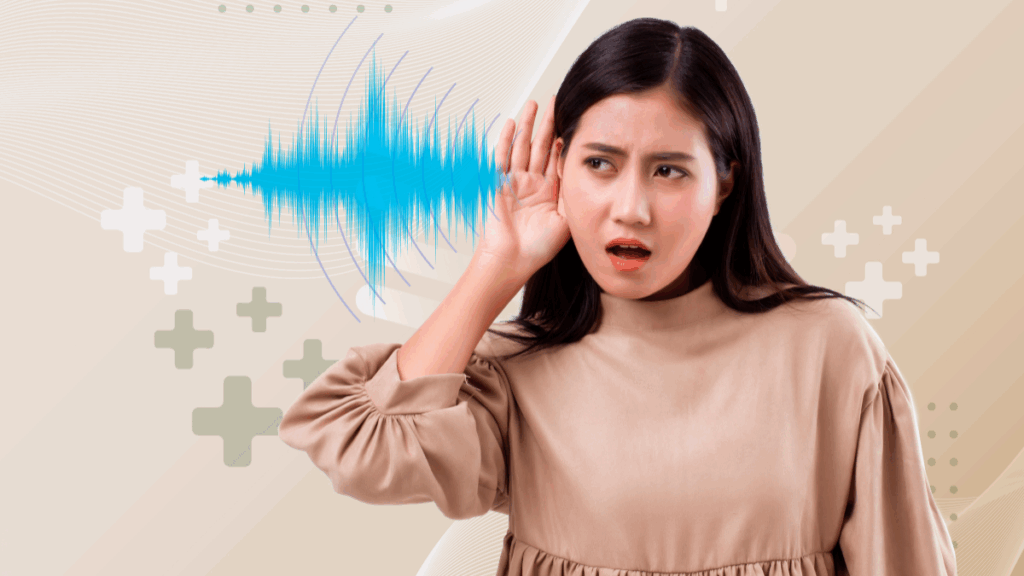
Human Decibel Range: A Comprehensive Guide
The human decibel range is critical to understanding how we perceive sound. Sound intensity measurement in db determines the audible sound limits that our ears can perceive. The human ear detects every noise variation from delicate whispers to the explosive sounds that exist within its natural range of hearing. The typical human hearing ability extends through 20 Hz low frequencies and 20 kHz high frequencies, together creating a complete range for detecting all frequency sounds. The human body loses its ability to detect particular sounds as we grow older, and extended contact with loud sounds results in hearing damage.
This article will explain how loudness levels impact hearing functions, as well as identify typical human decibel capacity and demonstrate why noise exposure requires safeguarding. The comprehension of this knowledge remains essential for lifelong protection of hearing function because it helps us listen to sounds without causing ear damage.
What is the Human Audible Range?
The human hearing frequency range typically spans from 20 Hz to 20,000 Hz (20 kHz). These sounds include noise from low frequencies produced by a deep bass sound and noise from high frequencies, like that caused by birds chirping. Sounds either lower or higher than this range are inaudible to the human ear.
- Low frequencies (20 Hz – 500 Hz) tend to be deep, like thunder rumbling.
- Midrange sounds (500 Hz – 2,000 Hz) tend to be sounds most often heard in conversation.
- High-frequency sounds (2,000 Hz – 20,000 Hz) are sharper, like a whistle.
The Normal Decibel Range for Humans
A decibel (db) is a unit used to measure the power of sound. The average range of decibels that can be heard by a person varies with place and hearing health. In general, these may be the levels:
- 0 db: The softest sound the average human ear can hear.
- 30 db: Quite a library.
- 60 db: Normal conversation.
- 85 db: Busy city traffic.
- 100 db: Lawnmower or hairdryer.
- 120 db: A rock concert.
- 180 db: Jet engine during takeoff (dangerously high to hearing).
Normal Decibel Levels in Everyday Life:
- Normal conversation: 60 db
- City traffic: 70-85 db
- Loud music or concert: 110 db
- Painful hearing threshold: 120 db
Understanding Decibel Levels and Their Impact on Hearing
Sound intensity is measured on the decibel scale, which indicates damage thresholds after being exposed to high levels of sound for an extended period: over 85 db. The louder the noise, the higher the decibel figure indicating its measurement.
Effects of Loud Decibel Levels
- Sounds above 85 decibels can lead to lifelong hearing impairment.
- Sound exposure exceeds 120 db, resulting in immediate hearing damage.
For the Protection of Your Hearing:
- Put earplugs on in a high-decibel environment and do not spend a long time around these high-decibel sound environments.
The Human Hearing Frequency Range: More Than Just Decibels
Regardless of the situations, it is not volume that delineates the human audible frequency; it is rather the range that defines what can be heard. Audibility ends with sounds lower than 20 Hz or greater than 20 kHz. A dog might hear sounds of 45 kHz, but a human would not. Thus, the aforementioned ability to perceive different frequencies indicates sound of what kind of signal it is.
Factors Reducing and Enhancing the Hearing Range:
Several factors can impact human hearing range:
- The older you grow, the less high frequencies you will hear. The elderly can normally hear only up to 12-14 kHz, with children and young adults typically hearing up to 20 kHz.
- Prolonged exposure to loud sound (loudness greater than 85 db) damages the delicate structures in the ear so that the hearing ability gradually deteriorates.
- Genetics and Health are naturally good hearers, while some hear well due to genetic predisposition, and some are genetically predisposed to impaired hearing threshold due to certain disease conditions.
How to Protect Your Hearing from Harmful Decibel Levels
You should remember that hearing protection exists for a reason; getting accustomed to high-decibel levels is the first step to long-term ear impairment. Here are some very easy and practical ideas to keep in check when taken seriously:
- Use earplugs/earmuffs around noisy environments like concerts, construction sites, and loud machines.
- Minimize time spent in clubs, sports events, or busy urban centres.
- Lower headphone volume during prolonged listening sessions. The 60/60 rule works best: listen at 60% volume for no more than 60 minutes at a time.
- After a couple of hours of loud sounds, take the rest of your day off to relax in peace.
- Choose noise-cancelling headphones to avoid cranking up the volume in noisy places.
- Use an app or a sound level meter to monitor noise levels and know when hearing protection is needed.
Conclusion
The decibel scale, which human beings can hear, represents a critical aspect of hearing science. Understanding the range of human hearing helps us become more aware of the sound level we are exposed to in our daily environment. Your ability to recognize hearing impacts depends on what decibel level exists regardless of whether you’re in a dialogue or a rock show, thus allowing you to safeguard your hearing health.
Proper hearing care remains essential because hearing loss is something vital that should be safeguarded.
Frequently Asked Questions
The average human ear can hear from 0 decibels to about 120-130 decibels. The above 0 decibels are inaudible to most people, and those above 120 decibels cause discomfort or a feeling of pain in the ear.
Long exposure to loud sounds, let’s say above 85 decibels, will damage hearing. Any noise above 120 decibels will harm a person almost immediately and cause loss of hearing or pain.
The pain threshold, for the greater part of humanity, is between 120 to 130 decibels. Such sounds can cause ear pain with the potential for permanent damage even during brief exposure.
Zero is the threshold of hearing; it is the faintest sound perceivable by a healthy ear. A few people with extremely acute hearing may hear sounds similar to 0 db; however, it is highly improbable.
Hearing deteriorates to its worst in old age as a result of how it works. It is due to the loss of the capacity to hear higher frequencies and smaller sounds in human beings. This, known as presbycusis, often starts after the age of thirty.
Dr. Harshi, is an accomplished Audiologist with extensive expertise in treating individuals with hearing impairments.

